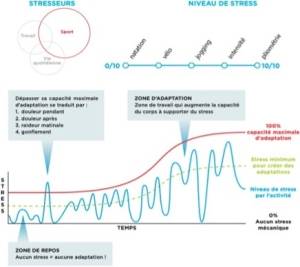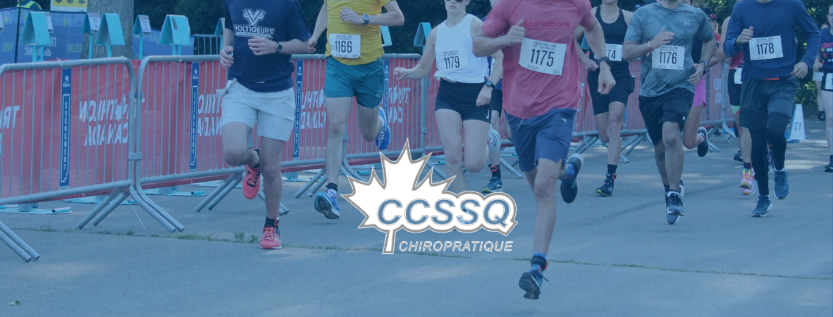Unfortunately, injuries are often one of the challenges to be overcome when preparing for a sporting event. Whether you’re an experienced athlete, an amateur or a beginner, the risk of developing pain during training is high.
Triathlon allows you to combine 3 disciplines, which has the advantage of distributing the stress on different joints and muscle groups over the course of a week’s training. On the other hand, triathlon does carry a certain risk of injury: over a one-year period, more than 70% of triathletes will experience an injury limiting their training for a minimum period of one week.
A review of the scientific literature shows that over 80% of triathlete injuries are overload pathologies affecting the lower limb (tendinopathy, stress fractures, medial tibial stress syndrome), linked to running.
The mechanical load on the body’s tissues (muscles, tendons, ligaments, joints) is considerable during running, which significantly increases the risk of injury, compared to cycling and swimming, where no impact is present.
The concept of mechanical stress management is a very important tool in the prevention and treatment of injury.

La Clinique Du Coureur 2020
The body has an impressive capacity to adapt, provided it has enough time to do so. It is therefore essential to progress slowly and in a controlled manner, sufficient to create adaptations, but without exceeding your adaptation limit to avoid overload injuries. In this way, the body will become increasingly tolerant of the stresses applied, structures will solidify, enabling you to increase the volume of training, without getting injured!
To remember:
- Modify one training factor at a time (volume, intensity, running surface, shoes). Each change requires time to adapt.
- Listen to your body : each individual has a different capacity to adapt, which is influenced by a number of external factors (fatigue, stress, diet, work, etc.). Talk to your trainer and adjust your training if you feel tension or pain during or after your session.
- Be patient as you progress ! Focus on more frequent but shorter sessions. For example, 2 jogging sessions of 5km in the same day is less tiring for your body than a 10km outing.
- Don’t hesitate to consult a professional as soon as possible. He or she will guide you through pain self-management strategies, the best exercises to use and a safe, gradual return to training.
Dr. Sarah-Jane Caumartin, chiropractor
References :
F.Delvaux et al, Injury prevention and triathlon. Journal de Traumatologie du Sport, Volume 36, Issue 3, September 2019, pp 147-152
Spiker, Andrea M. MD; Dixit, Sameer MD; Cosgarea, Andrew J. MD. Triathlon, Running Injuries. Sports Medicine and Arthroscopy Review: December 2012 – Volume 20 – Issue 4 – pp 206-213
Quantifying mechanical stress, La clinique du coureur, consulted on 5-07-2022 https://lacliniqueducoureur.com/quantification-du-stress-mecanique




